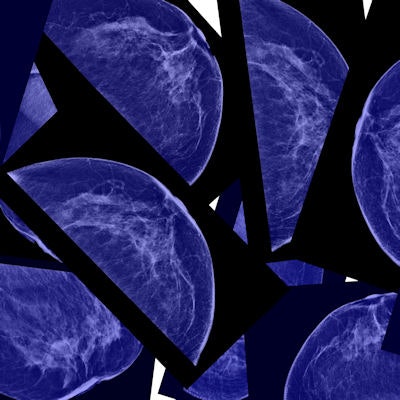
Utilizing both clinical and imaging data, a risk-assessment model based on artificial intelligence (AI) called the Breast Cancer Risk Calculator (BRISK) could avoid many unnecessary biopsies in patients with BI-RADS 4 mammography findings, according to research published online May 29 in JCO Clinical Cancer Informatics.
A team of researchers at Houston Methodist developed BRISK after applying natural language processing (NLP) and deep-learning techniques to analyze medical reports and images of more than 5,000 patients with mammograms categorized as BI-RADS 4. In testing, BRISK yielded 100% sensitivity for predicting malignancy and 74% specificity on BI-RADS 4 patients.
"We demonstrate that our deep-learning algorithm used for breast cancer risk assessment can help to identify more subtle patterns and to generate an optimal index for the decision to biopsy, while also improving accuracy of diagnosis support for the management of patients with findings suggested of breast cancer," wrote the researchers led by Tiancheng He, PhD.
Although the overall false-positive rate in mammography is estimated to range between 7% and 10%, over 70% of patient mammograms categorized as BI-RADS 4 may have negative biopsy results, according to the researchers.
"Thus, there is an urgent need for a system that can better stratify the risk of cancer and the need for biopsy in BI-RADS 4 patients and thereby reduce the number of unnecessary biopsies," they wrote.
To train BRISK, the researchers gathered mammography images and reports, ultrasound images, patient demographic information, and pathology results from 5,147 BI-RADS 4 patients at their institution. After an NLP software module extracted clinical report and patient demographic risk data, a deep-learning model then analyzed these cancer risk variables and the actual images themselves to produce a biopsy recommendation for the patient.
The researchers trained BRISK using 3,900 patients, adjusting the model to guarantee 100% sensitivity to ensure low clinical risk. They then tested its performance by comparing its results on the remaining 1,247 cases with the patient pathology reports.
| BRISK performance on BI-RADS 4 patients | |
| BRISK model | |
| Sensitivity | 100% |
| Specificity | 74% |
| Accuracy | 0.93 |
| Area under the curve | 0.93 |
BRISK was able to categorize abnormal mammograms into subtypes -- benign, atypia, lobular carcinoma in situ, ductal carcinoma in situ, and carcinoma -- and improve biopsy recommendations compared with standard BI-RADS 4 guidance, according to the authors.
"After prospective studies are conducted, such a tool will be made accessible on the web, where BRISK will display an index measure of biopsy recommendation that is more clinically relevant and informative than traditional BI-RADS scores," the authors wrote. "Through the website, clinicians will be able to enter image data and clinical variables of the patient under consideration for breast cancer risk assessment and biopsy."
The authors said they are currently evaluating BRISK at other cancer centers and plan to extend these AI-based tools to reduce overdiagnosis and overtreatment of other types of cancer.




















